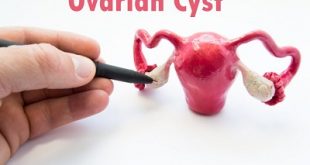Description
Obstetric fistula, abnormal duct or passageway that forms between the vagina and a nearby organ. This type of fistula most often forms either between the bladder and the vagina (vesicovaginal fistula) or between the rectum and the vagina (rectovaginal fistula). Obstetric fistulas frequently occur as a result of complications that arise during childbirth and that cause a prolonged decrease in blood supply to the vagina and bladder or rectum. This typically occurs when an obstruction causes the fetus’s head to remain pressed against the pelvis for a long period of time. Deprived of blood, the affected tissues eventually die and an opening forms between them, giving rise to a fistula and allowing urine or feces to pass uncontrollably. Other causes of obstetric fistula include Crohn disease, infections, tumours, radiation therapy, and physical trauma sustained during sexual violence.
Classification of obstetric fistula
Depending on the location of the fistula, obstetric fistula can be classified as:
Vesicovaginal Fistula: Fistula that connects the urinary bladder and vagina.
Rectovaginal Fistula: Fistula that connects the rectum and vagina.
Obstetric fistula is a preventable and treatable condition. Basic medical care for a pregnant woman with immediate attention to any labor pains can help prevent injury and fistula formation during labor. Obstetric fistula is treated with surgery.
Pathophysiology
Unrecognized bladder injury during a difficult hysterectomy or cesarean delivery may result in vesicovaginal fistula formation. Most vesicovaginal fistulas are caused by dissection of the bladder during the mobilization of the bladder flap, which causes devascularization or an unrecognized tear of the posterior bladder wall. Alternatively, if the vaginal cuff suture was unknowingly incorporated into the bladder, this can result in tissue ischemia, necrosis, and subsequent fistula formation.
The ureter may become injured during the dissection around the infundibulopelvic ligament or ligation of the uterine vessels. Unexpected pelvic hemorrhage may obscure the surgeon’s vision and result in ureteral injury that manifests as delayed ureterovaginal fistula.
Fistulas resulting from vaginal birthing occur during difficult or prolonged labor. The head of the fetus compresses the trigone or the bladder neck against the anterior arch of the pubic symphysis. This may result in tissue ischemia, necrosis, and eventual fistula formation.
What are the Causes of Obstetric Fistula?
Obstetric fistula is usually a problem of underdeveloped countries and is commonly caused to due prolonged, unattended labor. Other possible causes of vaginal fistula include:
- Poorly performed abortions
- Use of episiotomy and forceps during labor
- Pelvic fracture, resulting in a difficult labor
- Cervical cancer therapy with radiation
- Inflammatory bowel disease like ulcerative colitis, Crohn’s disease
- Sexual abuse or rape
- Trauma during surgery of vagina, perineum, anus or rectum
Risk factors for Obstetric Fistula
There are several indirect risk factors that can end up in causing the obstetric fistula.
Most of the impoverished countries can lack adequate medical infrastructure. They lack of proper medical professionals, medical care and infrastructure to take care of a woman in labor.
Malnutrition:
Lack of proper nutrition to the mother makes her vulnerable to diseases. Stunted growth during the growing years of the woman is the result of malnutrition and is associated with underdeveloped pelvic bones. The weak and underdeveloped bones can increase the risk of difficult labor and consequently of obstetric fistula.
Lack of Information:
Lack of information about maternal health, family pressures about waiting for a normal labor and other complications that may arise during home-births can contribute to the risk factors of developing obstetric fistula.
Early Marriages and Childbirth:
In under-developed countries like Sub-Saharan Africa, many girls are married off as soon as they attain menarche. This is due to the socio-economic factors where the girls are “sold” in marriage for a price. This leads to early childbirth when the girl’s tissues are not ready to take in the pressure. The tragic part is that once these girls develop obstetric fistula, they are shunned by the family and society.
Status of Women in Under-Developed and Developing Countries:
Women in certain societies are dominated by their husband and in-laws who decide about the maternal care to be provided. Some even believe that women are supposed to suffer in childbirth and refuse to go for cesarean section even if it is strongly indicated.
Symptoms
Depending on the fistula’s size and location, you may have minor symptoms or significant problems with continence and hygiene. Signs and symptoms of an obstetric fistula may include:
- Passage of gas, stool or pus from your vagina
- Foul-smelling vaginal discharge
- Recurrent vaginal or urinary tract infections
- Irritation or pain in the vulva, vagina and the area between your vagina and anus (perineum)
- Pain during sexual intercourse
Other symptoms of obstetric fistulas include:
- Fever
- Belly pain
- Diarrhea
- Weight loss
- Nausea
- Vomiting
Obstetric Fistula Complications
Obstetric fistula can be upsetting and embarrassing when they leak and cause bad smells. But they can also cause complications like:
- Vaginal or urinary tract infections that keep coming back
- Hygiene problems
- Stool or gas that leaks through the vagina
- Irritated or inflamed skin around your vagina or anus
- A swollen clump of infected tissue with pus (abscess) that could be dangerous without treatment
- Fistulas that come back
Women who have Crohn’s disease and develop a fistula have a high risk of complications, such as fistulas forming again later or fistulas that don’t properly heal.
Obstetric Fistula Diagnosis
Your doctor will do a pelvic exam and ask about your medical history to see if you have any risk factors for fistulas, like a recent surgery, infection, or pelvic radiation.
They may also order some tests, including:
Dye test. Your doctor will fill your bladder with a dye solution. They’ll ask you to cough or bear down. If you have a vaginal fistula, the dye will leak into your vagina.
Cystoscopy. Your doctor uses a thin device called a cystoscope to look inside your bladder and urethra for signs of damage.
X-rays:
- Retrograde pyelogram. This is a special test in which dye is injected through your bladder into your ureters. An X-ray can show whether there is leakage between a ureter and your vagina.
- This is an X-ray image of your fistula. It can show your doctor whether you have one or many fistulas and if other pelvic organs may be involved.
Flexible sigmoidoscopy. Your doctor looks at your anus and rectum with a sigmoidoscope (a thin, flexible tube with a tiny video camera at the tip).
CT urogram. You have dye injected into a vein, and CT scans make images of your vagina and urinary tract.
Pelvic MRI. A magnetic field and radio waves take detailed pictures of your rectum and vagina to help show the details of a rectovaginal fistula.
Treatment for obstetric fistula
Symptoms of a obstetric fistula can cause embarrassment to the sufferer but in many cases they can be treated effectively. Surgery will be offered in most cases but you may also be prescribed medication if your fistula was caused by infection.
Medicinal
Antibiotics
If your fistula developed from an infection or the surrounding area is infected you will be prescribed a course of antibiotics prior to any further intervention. You may also be offered antibiotic treatment if your fistula is due to inflammatory bowel disease.
Infliximab
Infliximab or Remicade as it is also known as is used to treat inflammation in those suffering from Crohn’s or other forms of inflammatory bowel disease. This has also shown to help heal a fistula is IBD is the root cause.
Surgical
The majority of fistulas will need surgical intervention to full heal. The operation will involve either or both a gynaecology surgeon and colorectal surgeon depending on the type of fistula.
The surgeon will remove the tract and close the opening by sewing healthy pieces of tissue together. This may involve:
- Attaching an anal fistula plug or a piece of biologic mesh which will grow with and heal the fistula
- Repair the damaged anal sphincter muscles if damage occurred from a recto-vaginal fistula
- A tissue graft or flap created from a nearby part of the body to cover the fistula
- In very complex cases, a colostomy may be created to divert waste away from the fistula site to allow healing to take place. In most instances this is only a temporary measure and the colostomy will be reversed once the fistula is healed.
Prevention
As we know, prevention is the ultimate key. It is important to understand that every pregnant lady should ensure skilled birth attendance and aftercare as their priority. They should have proper and immediate access to obstetric care if there is any complication during pregnancy. The awareness, knowledge and access to various measures related to obstetric fistula will make it as rare in the developing countries as it is in the industrialized world. Knowledge and resources are the utmost keys to the proper health of a woman. The following efforts will help women prevent obstetric fistula cases:
- Access to health services
- Access to education
- Higher living standards
- Gender equality
- Family planning
- Eradication of child marriage practices
- Awareness about human rights
- The marginalization of women and girls
 Diseases Treatments Dictionary This is complete solution to read all diseases treatments Which covers Prevention, Causes, Symptoms, Medical Terms, Drugs, Prescription, Natural Remedies with cures and Treatments. Most of the common diseases were listed in names, split with categories.
Diseases Treatments Dictionary This is complete solution to read all diseases treatments Which covers Prevention, Causes, Symptoms, Medical Terms, Drugs, Prescription, Natural Remedies with cures and Treatments. Most of the common diseases were listed in names, split with categories.








thread disease for example now is with me,if am I will not be able to complete two words the valume will reduce lower sound
how can be help B’se candidasis has disturbed andwife quite long, am sexually weak. and weak erection